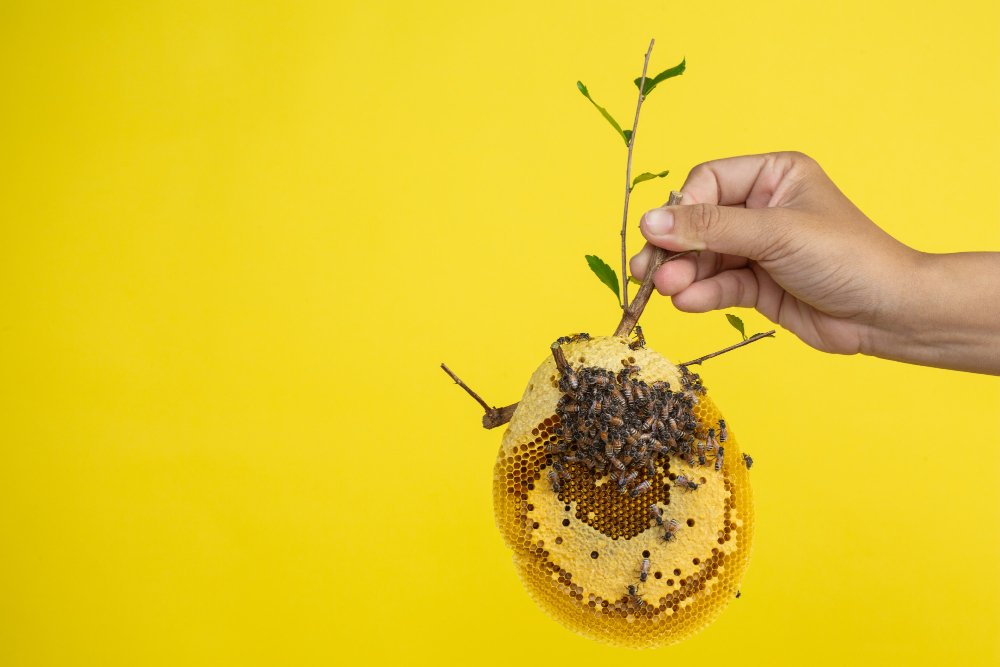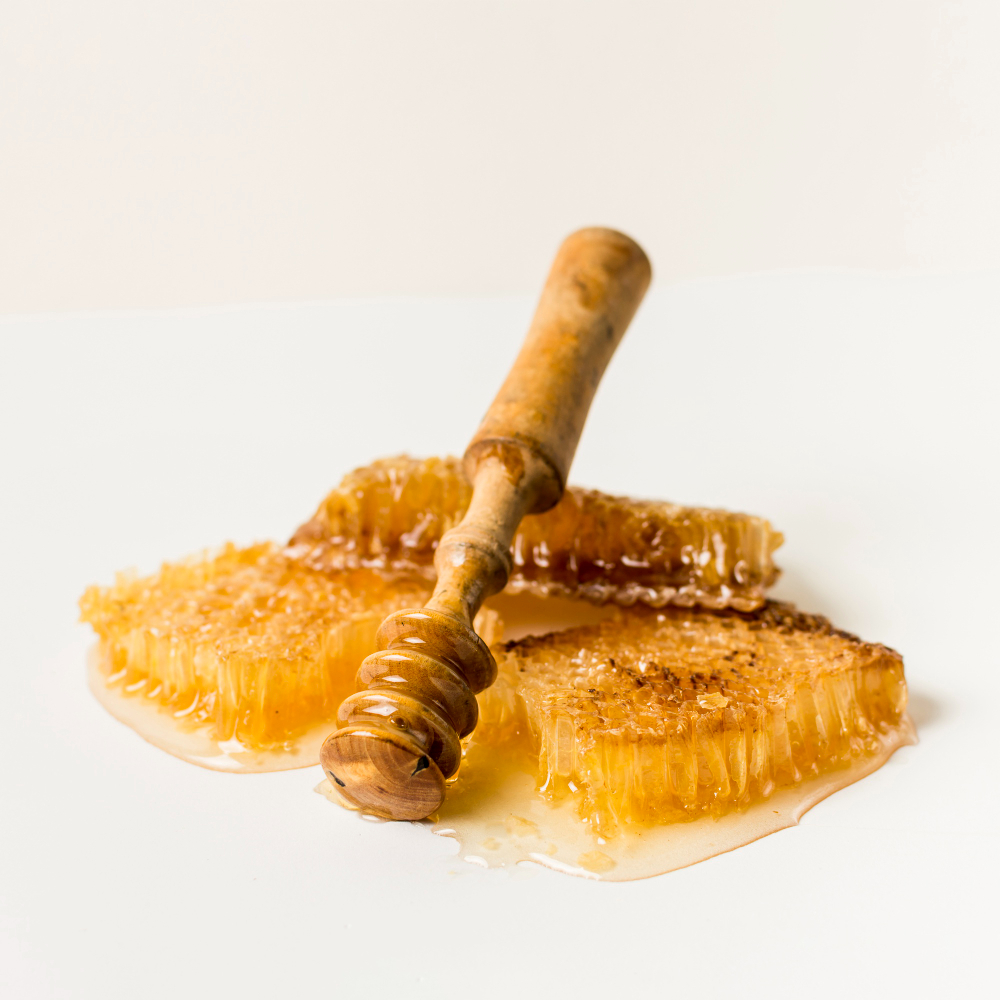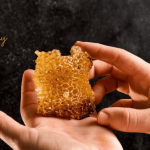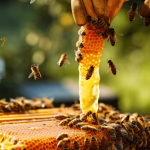Love honey but worried about its impact on the planet? The carbon footprint of bulk honey can vary a lot depending on whether it’s local or imported. Choosing the right honey can make a big difference for the environment. In this post, I’ll break down the carbon footprint of both options, why it matters, and how you can make eco-friendly choices. Let’s dive in and explore the sweet world of sustainable honey!

What is a Carbon Footprint?
A carbon footprint is the total amount of greenhouse gases, like carbon dioxide, produced by an activity or product. It’s measured in carbon dioxide equivalent (CO2e). For honey, this includes everything from beekeeping to shipping to your table. Understanding this helps us pick greener options.
Why Honey’s Carbon Footprint Matters
Honey is a natural, delicious product, but how it’s made and transported affects the planet. Bees are vital for pollination, but the way honey is produced and moved can create emissions. Choosing low-carbon honey supports both bees and the environment.
Why Care About Honey’s Impact?
Here’s why it’s worth thinking about
- Climate change: Lower emissions help slow global warming.
- Bee health: Sustainable practices protect pollinators.
- Local ecosystems: Buying local supports nearby farms and biodiversity.
- Healthier planet: Small choices add up to big change.
I switched to local honey last year, and it feels great knowing I’m helping the planet while enjoying my favorite sweetener!

Local Honey: How It’s Made and Its Carbon Footprint
Local honey comes from beekeepers in your region, often within 50-100 miles. It’s produced on a smaller scale, usually by family-run or eco-friendly farms. Let’s look at its carbon footprint.
Production Process
Local honey is made with minimal steps
- Beekeeping: Beekeepers maintain hives and collect honey.
- Harvesting: Honey is extracted by hand or with small machines.
- Packaging: It’s bottled in reusable glass jars or containers.
- Transport: Honey travels short distances to markets or stores.
Carbon Footprint of Local Honey
Local honey has a low carbon footprint because it avoids long-distance shipping. Here’s a breakdown
- Low transport emissions: Short trips (e.g., to a farmers’ market) use less fuel. A truck traveling 50 miles emits about 10-20 kg CO2e per ton of honey.
- Small-scale production: Local farms use less energy-intensive equipment.
- Sustainable practices: Many local beekeepers avoid pesticides and plant wildflowers, which store carbon in soil.
For example, my local beekeeper delivers honey by bike to the market. That’s practically zero emissions!
Benefits of Local Honey
Choosing local honey is great for the planet and your community
- Lower emissions: Less transport means less CO2e.
- Supports local economies: Helps small farmers and beekeepers.
- Boosts biodiversity: Local farms often plant pollinator-friendly flowers.
- Fresher product: Less time in transit means better quality.
Imported Honey: How It’s Made and Its Carbon Footprint
Imported honey comes from faraway countries, like China, Argentina, or New Zealand. It’s often mass-produced and shipped globally. While it’s cheaper, its carbon footprint is much higher.
Production Process
Imported honey involves more steps
- Large-scale beekeeping: Big farms manage thousands of hives.
- Processing: Honey is filtered, heated, and sometimes blended.
- Packaging: Packed in plastic or bulk containers for shipping.
- Transport: Shipped by boat, plane, or truck across continents.
Carbon Footprint of Imported Honey
Imported honey creates more emissions due to long-distance transport and industrial practices. Here’s why
- High transport emissions: Shipping honey from China to the U.S. by boat can emit 500-1,000 kg CO2e per ton. Planes are even worse, at 2,000 kg CO2e per ton.
- Industrial processing: Heating and filtering use energy-intensive machines.
- Packaging waste: Plastic containers add to environmental harm.
- Pesticide use: Large farms may use chemicals that hurt bees and ecosystems.
For example, a jar of honey shipped from Argentina to my local store travels over 5,000 miles. That’s a lot of carbon!
Downsides of Imported Honey
Imported honey has some drawbacks
- Higher emissions: Long-distance shipping increases CO2e.
- Environmental impact: Industrial farming can harm bees and soil.
- Quality concerns: Processing may reduce nutrients and flavor.
- Less traceability: Hard to know how the honey was made.
Comparing Local vs. Imported Honey
Let’s put it side by side to see the difference
- Transport: Local honey travels 50-100 miles (10-20 kg CO2e per ton). Imported honey travels thousands of miles (500-2,000 kg CO2e per ton).
- Production: Local farms use sustainable, low-energy methods. Imported honey often comes from energy-heavy industrial farms.
- Packaging: Local honey uses reusable glass. Imported honey often uses plastic.
- Bee health: Local farms prioritize bee-friendly practices. Industrial farms may stress bees or use pesticides.
A study estimated that local honey has a carbon footprint 5-10 times lower than imported honey. That’s a huge difference!
Why Local Honey Wins for the Planet
Local honey is the clear eco-friendly choice. It cuts emissions, supports sustainable beekeeping, and helps local ecosystems. Plus, it often tastes better because it’s fresher and less processed. Choosing local honey is a small step with a big impact.
How to Choose Low-Carbon Honey
Want to make greener choices? Here’s how to pick sustainable honey:
- Buy local: Shop at farmers’ markets or local stores. Look for “local” or “regional” on the label.
- Choose raw and organic: These have fewer processing emissions.
- Check the source: Ask where the honey comes from. Avoid vague labels like “product of multiple countries.”
- Support eco farms: Look for beekeepers who plant wildflowers or avoid pesticides.
I always chat with my local beekeeper at the market. They love sharing how they care for their bees!
Challenges of Choosing Local Honey
Local honey isn’t always perfect. Here are some hurdles
- Availability: Not every area has local beekeepers.
- Cost: Local honey can cost $8-$15 per jar, compared to $5 for imported.
- Seasonal supply: Local honey may sell out in winter.
- Allergies: Local honey may contain pollen that triggers allergies.
Despite these, the benefits outweigh the downsides. A little effort goes a long way!
How to Support Sustainable Beekeeping
You can do more than just buy local honey. Here are ways to help bees and reduce your carbon footprint:
- Plant a bee garden: Grow flowers like lavender, sunflowers, or clover.
- Avoid pesticides: Use natural pest control in your yard.
- Spread awareness: Share about the benefits of local honey.
- Support eco policies: Advocate for bans on harmful pesticides like neonicotinoids.
I planted a small patch of wildflowers in my yard, and it’s buzzing with bees now!
Cost Comparison
Local honey costs more upfront but saves in other ways. A 16-ounce jar of local honey is $8-$15, while imported is $5-$10. But local honey supports sustainable practices, reducing long-term environmental costs. Plus, you’re investing in your community!
Safety and Precautions
Honey is safe for most, but keep these in mind
- Allergies: Test for pollen or bee product sensitivities.
- Kids under 1: Avoid raw honey due to botulism risk.
- Storage: Keep honey in a cool, dry place to maintain quality.
- Check labels: Ensure “raw” and “organic” for eco-friendly options.
Frequently Asked Questions
Why is imported honey cheaper?
Imported honey is mass-produced and shipped in bulk, cutting costs. But it has a higher carbon footprint and may harm bees.
How can I find local honey?
Visit farmers’ markets, check local stores, or search online for beekeepers in your area.
Does local honey taste different?
Yes! It varies by region due to different flowers. My local honey has a floral, citrusy flavor!
Can I store honey long-term?
Yes, honey lasts for years if kept in a sealed container in a cool place.
Final Thoughts
The carbon footprint of bulk honey depends on where it comes from. Local honey is the eco-friendly winner, with lower emissions and better practices for bees. Imported honey, while cheaper, racks up a bigger carbon cost. By choosing local, you support the planet, bees, and your community. Next time you buy honey, go local—it’s a sweet way to make a difference!
Have you tried local honey or visited a beekeeper?
Share your thoughts in the comments. Let’s keep the planet buzzing!
For more information, visit , https://besthoneytobuy.com/






